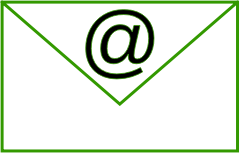Set expectations for new subscribers
- josh
- July 10, 2015
- Best practices
A common way to build your email address list is to provide a free resource such as an eBook or PDF in return for contact information from the reader. While this is a good way to be mutually beneficial to the reader and the company, often the reader is providing their information only for the free resource and does not want to receive the emails. This leads to sending to an unengaged recipient or worst, sending to a bad email address.
Another way to build your email address list is to pre-check the “subscribe to the mailing list” when a user creates an account on your site. The same problem with the free resource offer, the user may not want the emails.
You can combat both of these types of unengaged users by providing them with an example of what they will be receiving from you via email. Displaying the most recent mailing or providing them with how often you send out monthly will not only help you collect accurate information but also helps set the expectations of what the recipient will be receiving. Examples of sending expectations would be to inform the recipient that you only send once a month but then allow them to select an onboarding program that may send daily for 10 days. Providing the end user with information about your mailings encourages them to provide accurate information and helps build your mailing list with recipients who want to engage with your emails. If you offer a free resource such as a whitepaper or ebook behind a signup form, send the download link within the email so that it encourages readers to provide accurate information. By sending the email with a link the recipient clicks, it shows ISPs that this mail is wanted and helps boost your sending reputation.
Providing the end user with information about your mailings encourages them to provide accurate information and helps build your mailing list with recipients who want to engage with your emails. If you offer a free resource such as a whitepaper or ebook behind a signup form, send the download link within the email so that it encourages readers to provide accurate information. By sending the email with a link the recipient clicks, it shows ISPs that this mail is wanted and helps boost your sending reputation.